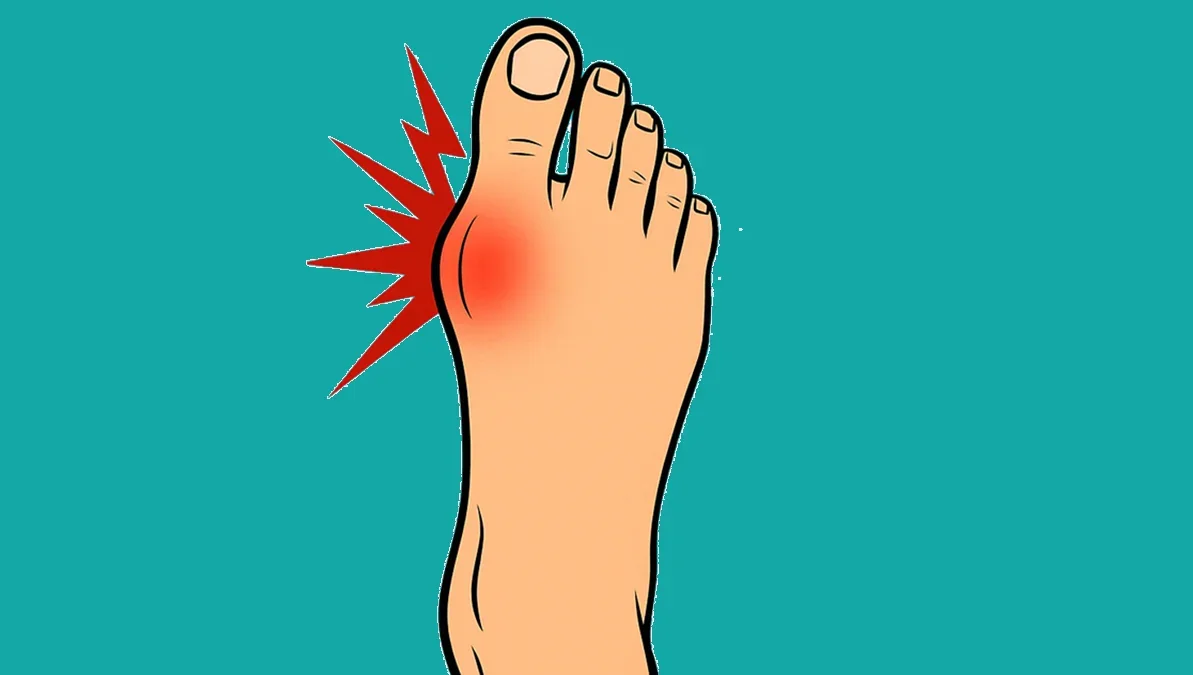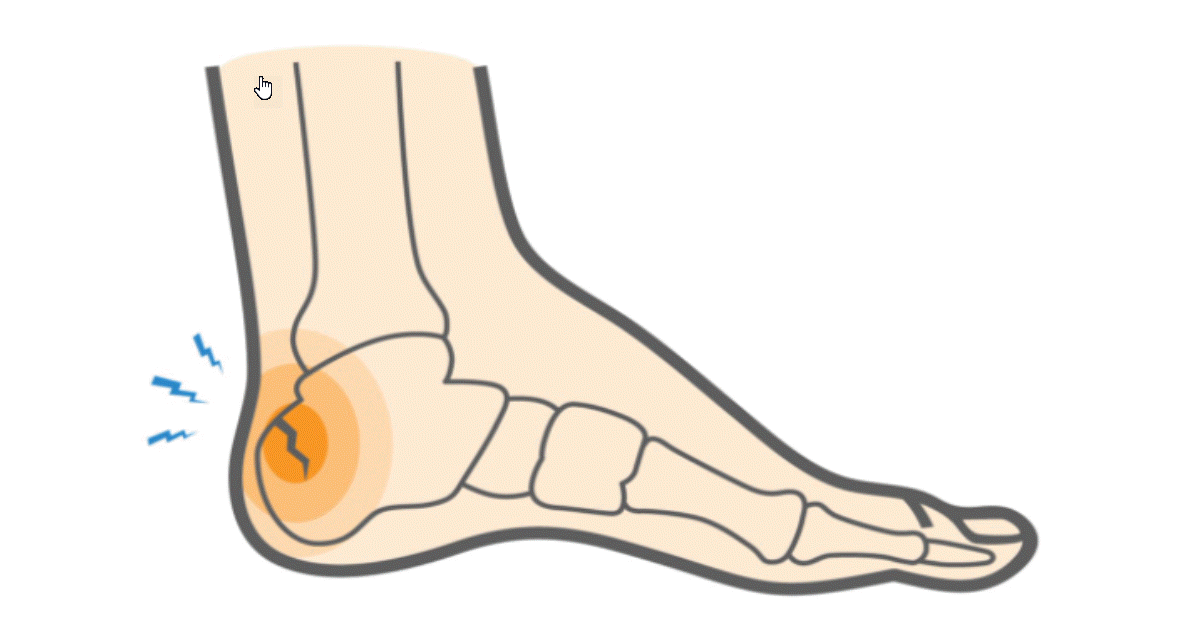Imagine slipping your feet into elegant shoes, but each step is a reminder of discomfort due to the discreet but painful presence of a “bunion” on the big toe. Let’s dive into the world of hallux valgus together, discovering the stories, solutions and advances that offer relief to those dancing on the fine line between fashion and podiatric pain.
Introduction
Hallux valgus is a deformity of the foot characterized by a deviation of the big toe outwards, that is to say towards the other toes. This condition is also known as a “bunion” because of the appearance of a prominent bony bump that forms at the base of the big toe.
The main features of hallux valgus include the deviation of the big toe outward and the formation of a bump, usually at the joint at the base of the big toe. This deviation may be accompanied by pain, inflammation, redness and difficulty wearing shoes, especially narrow shoes.
Several factors can contribute to the development of hallux valgus, such as genetic predispositions, structural abnormalities of the foot, inappropriate shoes (especially those that are too narrow or place excessive pressure on the front of the foot), and muscular imbalances.
Treatment for hallux valgus may vary depending on the severity of the deformity and associated symptoms. It may include conservative measures such as wearing appropriate shoes, using orthotic insoles, modifying activities that worsen symptoms, and applying ice to reduce inflammation. In more severe cases, surgery may be considered to correct the deformity and relieve symptoms.

This image illustrates the condition known as Hallux Valgus, or bunion, characterized by a lateral deviation of the big toe and the formation of a bony protrusion at the base of the toe joint. The condition often results in discomfort, pain, and difficulty wearing shoes. Common causes include genetic factors, improper footwear, and foot structural abnormalities. Treatment options vary from conservative methods, such as orthotics and footwear changes, to surgical intervention in severe cases., Blausen.com staff (2014). “Medical gallery of Blausen Medical 2014“. WikiJournal of Medicine 1 (2). DOI:10.15347/wjm/2014.010
Anatomy
The foot, a marvel of anatomy, is a complex structure comprising several elements, such as the distal phalanx, the proximal phalanx, the metatarsophalangeal joint and the metatarsus. These bony and ligamentous components, acting in harmony, give the foot the crucial ability to provide stability and balance to the entire body, enabling activities such as walking and running.
At the heart of this complexity is the ankle, a critical hinge joint. The way the talus is held between the two malleolus resembles a mortise, ensuring a sturdy connection. This strategic joint, in conjunction with the calcaneus below and the scaphoid bone and cuboid bone in front, forms what Pisani called “coxa pedis” because of its similarities to the hip joint. Its stabilizing function plays a crucial role in our ability to walk on uneven terrain, maintaining balance on one foot. In addition, it intervenes in the synchronization of walking, facilitating the transition from pronation to supination and vice versa.

Detailed view of the bones of the foot, including the phalanges, metatarsals, and tarsal bones. Each section is color-coded to distinguish the different types of bones, illustrating the complex organization and structural function of this essential part of the human skeleton.
Source: Ospied.jpg ; VonTasha ; File: Ospied.svg derivative work: Mario Modesto (d) ; derivative work: Jppialasse. Translation into French, CC BY-SA 4.0 https://creativecommons.org/licenses/by-sa/4.0, via Wikimedia Commons.
The midfoot, for its part, is made up of the tarsometatarsal joints involving the three cuneiforms, the cuboid and the metatarsals. This region plays a role in the stability and flexibility of the foot.
The forefoot, including the metatarsophalangeal and interphalangeal joints of the toes, represents the part of the foot in direct contact with the ground when walking. A complex intertwining of tendons, ligaments and small muscles connects the forefoot to the rearfoot, forming a powerful dynamic lever in the transmission of forces during walking.
When addressing signs and symptoms related to foot anatomy, it is essential to consider aspects such as pain, joint mobility and muscle function. Conditions such as sprains, fractures or joint disorders can cause a variety of symptoms, requiring careful assessment by healthcare professionals including podiatrists and orthopedists.
In conclusion, the anatomy of the foot reveals remarkable engineering, integrating various elements to ensure stability, balance and functionality during our daily activities. A thorough understanding of this complex structure is essential to treating and preventing foot-related problems, allowing everyone to continue to explore the world on a sure-footed footing.
Prevalence
- Population: 23% of adults aged 18 to 65 and 35.7% of adults over 65
- Femme: 30%
- Homme: 13%
- Elderly: 35.7%
Adductor and abductor hallucis and Flexor hallucis brevis
The adductor hallucis, abductor hallucis, and flexor hallucis brevis are all involved in the movement and stabilization of the big toe.
Hallux adductor:
Effect in Hallux Valgus: The hallux adductor can experience tension changes due to altered alignment of the big toe. It could contribute to toe deviation by exerting unbalanced forces.
Abductor of the Hallux:
Effect in Hallux Valgus: The abductor hallucis helps to move the big toe away from the other toes. In hallux valgus, its function may be compromised, contributing to medial deviation of the toe.
Flexor Hallux Brevis:
Effect in Hallux Valgus: This muscle is involved in flexion of the big toe. In hallux valgus, changes in alignment can affect its function, potentially influencing the position and movement of the big toe.
It is important to note that changes in these muscles are often part of a complex interaction of factors, including ligamentous and bony changes. Additionally, muscle imbalances can contribute to the progression of hallux valgus. As an osteopath, you might consider a holistic approach, including manual therapy, exercises and patient education to address these issues and relieve symptoms associated with hallux valgus.

Since no muscle inserts onto the head of the first metatarsal, its position is influenced by the position of the proximal phalanx. As the proximal phalanx moves laterally, it gradually pushes the metatarsal head medially, increasing the space between the first and second metatarsals. As this process progresses, the medial joint capsule attenuates while the lateral joint capsule gradually contracts. The sesamoid mechanism remains in place as the first metatarsal deviates medially, and the sesamoids eventually lie lateral to the head of the first metatarsal. As the deformity progresses, the muscles move laterally and further reinforce the deformity by exerting their pull laterally relative to the long axis of the metatarsophalangeal joint of the first toe. Additionally, when the medially located abductor hallucis tendon slides under the head of the first metatarsal, it creates a rotational deformation of the proximal phalanx, resulting in progressive pronation of the big toe when viewed from the end of the foot. Thus, hallux valgus is not only a progressive lateral deformity in the axial plane, but also a rotational deformity in the coronal plane.
Causes of hallux valgus
The main causes of hallux valgus include genetic factors, structural abnormalities of the foot, improper footwear, and sometimes underlying medical conditions. A family history of hallux valgus may increase the risk, suggesting a genetic component. Some feet have structural abnormalities, such as excessive rotation of the metatarsal bone, which can predispose to this condition. Frequently wearing narrow, pointed, or high-heeled shoes can contribute to the development of hallux valgus by placing excessive pressure on the toes. Medical conditions such as rheumatoid arthritis may also be associated with this deformity. A combination of these factors can often contribute to the formation of hallux valgus, and consideration of these elements is essential for the prevention and management of this condition.
- Heredity: A genetic predisposition may play a role in the development of hallux valgus. If members of your family have a history of this condition, you may have an increased risk.
- Foot type: Certain foot types, such as flat feet or feet with excessive pronation, can increase the likelihood of developing hallux valgus.
- Gender: Women are more likely to develop bunions than men. This may be related to factors such as bone structure and shoe choices commonly worn by women.
- Inappropriate Footwear: Regularly wearing narrow, pointy, high-heeled, or ill-fitting shoes can put excessive pressure on the big toe joint, leading to deviation.
- Rheumatoid Arthritis: Inflammatory conditions such as rheumatoid arthritis can contribute to the formation of hallux valgus by affecting the joints.
- Ligament laxity: Excessive laxity of the ligaments surrounding the big toe joint can allow progressive deviation.
- Trauma: Injuries to the foot, particularly around the big toe joint, can contribute to the development of hallux valgus.
- Professional activity: Certain jobs that require standing for long periods of time can increase the risk of hallux valgus.
- Age: The risk of hallux valgus increases with age because the structures of the foot can undergo changes over time.
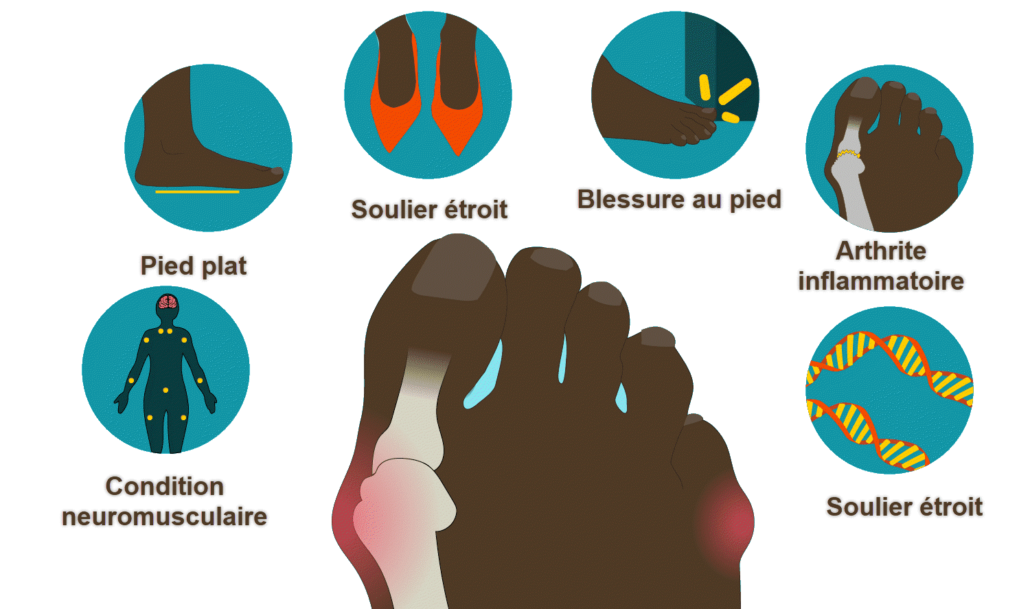
Symptoms
Outward deformation of the big toe can cause pain and discomfort in the metatarsophalangeal joint, especially when walking or wearing shoes. A bony bump may form at the base of the big toe, causing inflammation, redness, or even localized swelling. Calluses or corns can develop on the skin due to friction with shoes. Deviation of the big toe can also lead to alignment problems in the other toes, sometimes causing pain in adjacent toes. The mobility of the joint may be affected, and the person may feel stiffness in the big toe. In addition to the physical aspects, hallux valgus can have psychological implications, affecting the confidence and emotional well-being of affected individuals. Symptom management may include shoe modifications, orthotics, and in some cases, surgery.
- Visible bump: The presence of a bony bump or protrusion on the side of the foot, at the base of the big toe, is one of the characteristic signs of hallux valgus.
- Big toe deviation: The big toe is deviated toward the second toe, which can cause toe misalignment.
- Pain: Pain can occur in the big toe joint, especially when walking or wearing inappropriate shoes.
- Inflammation: Inflammation may develop around the affected joint, causing redness and swelling.
- Joint stiffness: Some individuals may experience stiffness or difficulty moving the big toe.
- Formation of corns or calluses: Due to pressure from shoes, corns or calluses may form on the bump or other parts of the foot.
- Changes in gait: To avoid pain, a person with hallux valgus may change their gait, which can lead to other problems in the feet, knees, or back.
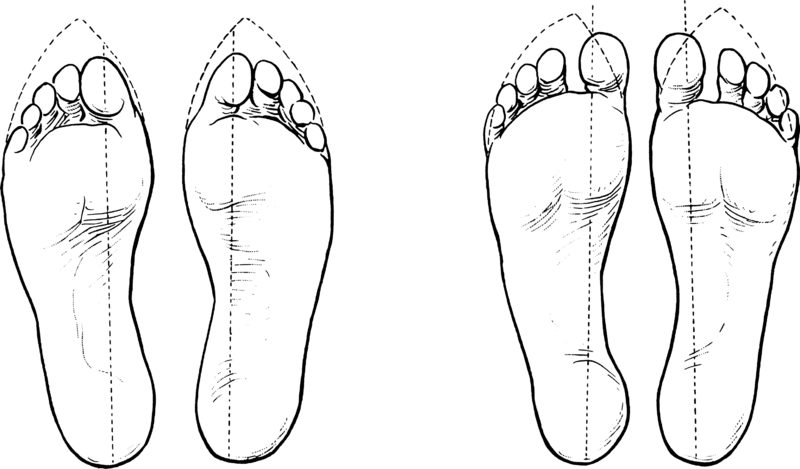
Pathophysiology
The pathophysiology of hallux valgus involves a complex combination of genetic, mechanical, and environmental factors. Genetic predispositions play a role, as a family history of hallux valgus can increase the risk of developing this deformity. Structural abnormalities of the foot, such as defects in ligament and muscle formation, may also contribute to the pathophysiology.
On a mechanical level, muscular imbalances, joint hypermobility, or excessive pronation of the foot can promote the development of hallux valgus. Using inappropriate shoes, especially those that place excessive pressure on the forefoot and are narrow in the forefoot area, can make the deformity worse.
The progression of hallux valgus is often linked to changes in the structure of the metatarsophalangeal joint, with a progressive deviation of the big toe outwards. This can lead to uneven pressure on the joint, causing inflammation, bony bump formation, and changes in the alignment of adjacent toes.
Understanding the pathophysiology of hallux valgus is crucial for developing appropriate treatment approaches, ranging from conservative symptom management to corrective surgical intervention in more advanced cases.
- Initial Deviation:
- The deformity often begins with a lateral deviation of the metatarsophalangeal joint of the big toe.
- Ligament Instability:
- The ligaments around the joint can become unstable, losing their ability to maintain the normal structure of the toe.
- Genetic Factors:
- Some individuals may have a genetic predisposition to developing hallux valgus.
- Pronation Excessive :
- Foot biomechanics, including excessive pronation, may contribute to the development of hallux deviation.
- Wearing Inappropriate Footwear:
- Frequently wearing narrow, pointy, or high-heeled shoes can put pressure on the front of the foot, making the deviation worse.
- Displacement of the Abductor Tendon:
- The abductor hallucis tendon, which stabilizes the toe, can move laterally, contributing to the deformity.
- Formation of a Bump (Exostosis):
- In response to the deviation, a bony bump (exostosis) may form at the base of the big toe.
- Displacement of the Metatarsal Head:
- The metatarsophalangeal joint can move towards the inner part of the foot, accentuating the deviation.
- Inflammation and Pain:
- The deformity can lead to inflammation of the surrounding tissues, causing pain, especially when walking or wearing inappropriate shoes.
- Progressive Deformation:
- Hallux valgus tends to progress gradually over time, with the deviation of the toe worsening if corrective action is not taken.
It is important to emphasize that the pathophysiology of hallux valgus can vary from one person to another, and several factors interact in the development of this condition.
Biomechanics of hallux valgus
The biomechanics of hallux valgus involve alterations in the normal functioning of the foot and toe, resulting in an outward deviation of the big toe. This condition affects the distribution of forces across the metatarsophalangeal joint, leading to significant changes in foot dynamics.
In normal position, the metatarsophalangeal joint allows efficient propulsion during walking. However, in the case of hallux valgus, the deviation of the big toe disrupts the natural alignment, creating biomechanical instability. This can lead to increased pressure on the sides of the joint, causing inflammation, progressive deformity and impaired walking.
Muscular imbalances associated with hallux valgus also contribute to altered biomechanics. Some muscles may become tighter, while others may weaken, disrupting the muscular balance needed to maintain proper toe alignment.
Additionally, the biomechanics of hallux valgus is influenced by external factors such as wearing inappropriate shoes. Narrow, pointed-toe, or high-heeled shoes can worsen the deformity by placing excessive pressure on the front of the foot, contributing to the progression of the deformity.
Understanding the biomechanics of hallux valgus is crucial for designing therapeutic interventions aimed at restoring normal biomechanical function, relieving symptoms, and preventing progression of the deformity.
- Lateral displacement of the hallux: The most characteristic feature of hallux valgus is the lateral displacement (valgus) of the big toe. This often results from the metatarsophalangeal joint deviating outward, creating an abnormal angle between the first and second metatarsals.
- Instability of the metatarsophalangeal joint: Lateral displacement of the hallux can lead to instability of the metatarsophalangeal joint. This instability can influence the distribution of pressure under the foot during walking, contributing to the formation of calluses and corns.
- Effect on the plantar arch: Hallux valgus can influence the height of the plantar arch. Changes in foot mechanics can lead to a decrease in arch height, affecting weight distribution and stability of the foot during walking.
- Muscular imbalances: Imbalance between the muscles of the medial (inner) and lateral (outer) side of the foot can alter muscle dynamics. Weakened or tight muscles can contribute to the development and progression of hallux valgus.
- Impact on gait: People with hallux valgus may adopt modified gait patterns to alleviate pain associated with the deformity. These adaptations can lead to changes in the overall biomechanics of the body.
- Osteoarthritis: The progression of hallux valgus can ultimately lead to osteoarthritis of the metatarsophalangeal joint, which can have important implications on the biomechanics of the foot and on the patient’s quality of life.
Shorter first metatarsal causing hallux valgus
A shorter first metatarsal is a contributing factor to the development of hallux valgus. This condition is characterized by lateral deviation of the big toe. When the first metatarsal is shorter than the second, it creates a first hypermobile radius and widens the first intermetatarsal angle. This combination of anatomical features promotes the formation of a flared forefoot.
Due to the reduction in the length of the first metatarsal, the weight supported during the final phase of walking is mainly assumed by the second toe. If a muscular imbalance occurs between the adductor and abductor hallucis muscles, the big toe may deviate sideways. This phenomenon is accentuated by the contractions of the flexors and the long extensor of the toe, acting like a bowstring and further pushing the end of the big toe towards adduction.
When this flared forefoot, predisposed by the morphology of the first metatarsal, is forced into pointed, high-heeled shoes, it adds excessive weight. This additional pressure causes an accelerated deviation of the first toe in a lateral direction. Pointed shoes contribute to increased pressure on the medial aspect of the metatarsophalangeal joint, leading to inflammation and pain, often associated with the formation of a bunion, also known as a tailor’s bunion.

(A) The first metatarsal, which is shorter than the second, creates a hypermobile first ray, resulting in a widening of the first intermetatarsal angle. This combination of factors contributes to the formation of a widely flared forefoot. Due to the reduction in length of the first metatarsal, the second toe assumes a preponderant load during the final phase of walking. In the event of muscular imbalance between the adductor and abductor hallucis, the big toe deviates laterally (B) and undergoes a pronation movement (C). These movements are accentuated by contractions of the flexors and extensor longus of the toe, acting like a bowstring and further moving the tip of the big toe toward adduction (D). When this splayed, predisposed forefoot is forced into a pointed, high-heeled shoe, excess weight is added, causing the first toe to deviate more and more quickly in a lateral direction. The pointed shoe increases pressure on the medial aspect of the metatarsophalangeal joint, leading to inflammation and pain of the bursa (tailor’s bunion).
Risk factors for hallux valgus
Several risk factors can contribute to the development of hallux valgus (bunion). These factors can vary from person to person, and often a combination of these can cause this deformity to form. The main risk factors include:
- Genetics: A genetic predisposition may play a role in the development of hallux valgus. If family members have a history of this condition, there may be an increased risk.
- Gender: Women are more likely to develop bunions than men. This can be attributed to differences in foot structure, shoe choices, and hormonal fluctuations.
- Age: The risk of hallux valgus increases with age. Foot deformities can develop and worsen over time.
- Foot type: Certain foot types, such as flat feet, wide feet, or feet with excessive pronation, may be associated with an increased risk of hallux valgus.
- Inappropriate Footwear: Frequently wearing narrow, pointy, high-heeled, or ill-fitting shoes can put excessive pressure on the big toe joint, contributing to the formation of a bunion.
- Occupational Activity: Certain occupations or activities that require standing for long periods of time may increase the risk of hallux valgus.
- Inflammatory diseases: Conditions such as rheumatoid arthritis, which involve inflammation of the joints, can increase the risk of developing a foot deformity.
- Ligament laxity: Excessive laxity of the ligaments can promote deviation of the big toe joint.
It is important to note that the presence of these risk factors does not necessarily lead to the development of hallux valgus, but they can contribute to its formation.
Differential diagnosis of hallux valgus
- Rheumatoid arthritis: Inflammation of the joints, such as that seen in rheumatoid arthritis, can cause joint pain, deformity and stiffness, including in the big toe joint.
- Gout: Gout is a form of arthritis characterized by deposits of uric acid crystals in the joints, causing pain and swelling.
- Bursitis: Inflammation of the synovial bursa near the big toe joint can cause pain and swelling similar to that seen with hallux valgus.
- Morton’s neuroma: A thickened nerve between the toes can cause pain and numbness, often confused with symptoms of hallux valgus.
- Lumbar Disc Herniation: Problems in the spine, such as a herniated disc, can cause pain radiating down the leg, which can be confused with symptoms related to hallux valgus.
- Foot Fracture: A fracture of the foot bone can cause severe pain and swelling, which may be confused with symptoms of hallux valgus.
- Tarsal tunnel syndrome: Compression of the posterior tibial nerve can cause pain in the arch of the foot, resembling symptoms of hallux valgus.
- Neurological Conditions: Certain neurological conditions can cause problems with coordination and walking, which can be confused with the gait changes seen in people with hallux valgus.
Shoe selection advice for those with hallux valgus
For people suffering from hallux valgus, choosing the right shoes is essential to relieve symptoms and prevent the condition from getting worse. Opt for shoes that provide sufficient space for the toes, thus avoiding excessive pressure on the deviated hallux. Choose models with a wide and deep toe box to allow for better weight distribution. Low heel shoes promote more natural walking and reduce pressure on the forefoot. Look for shoes with a cushioning insole to absorb shock and provide additional support. Flexible, breathable materials help prevent irritation. It is recommended to carry out tests to ensure that the shoes do not rub against the hallux valgus, thus avoiding any friction that could aggravate the condition. Consulting a healthcare professional or podiatrist can also provide personalized advice on choosing the right shoes for your specific situation.
- Toe Box Wide: Opt for shoes with a wide toe box that allows your toes to move freely without being compressed. This reduces pressure on the big toe joint.
- D Shape: Look for shoes with a D shape rather than a point. Shoes with a narrow toe box can aggravate hallux valgus by compressing the toes.
- Low Heel: Choose shoes with a low heel to reduce pressure on the front of the foot. High heels can accentuate the deviation of the big toe.
- Removable Insoles: If possible, choose shoes with removable insoles. This allows the insoles to be adjusted to accommodate custom orthotics if necessary.
- Soft Materials: Opt for shoes made with soft, flexible materials that adapt to the shape of the foot, reducing friction and irritation.
- Arch Support: Light arch support can help stabilize the foot. However, it is essential that the support is not too pronounced to avoid creating additional pressure on the forefoot.
- Adjustable Closures: Choose shoes with adjustable closures, like laces or straps, to allow for a personalized fit.
- End of Day Try-On: Try the shoes on at the end of the day when feet are often a little more swollen, giving you a better idea of comfort throughout the day.
- Try on Orthotics: If you use orthotics, be sure to try the shoes on with them to ensure a comfortable fit.
- Avoid Narrow or High-Heeled Shoes: Avoid shoes that are narrow, pointed, high-heeled, or with a shape that puts excessive pressure on the front of the foot.
Treatment of hallux valgus
Non-surgical approach
- Shoe modification: Wide, low-heeled shoes.
- Orthotics: Improves alignment and support.
- Painkillers: Acetaminophen
- Ice: Ice over the inflamed deformity to reduce inflammation.
- Medial Bunion Pads: Prevents irritation from HV deformity.
- Stretching: Helps maintain mobility of the affected joint.
Bunions become painful if allowed to progress. But not all bunions necessarily progress. Many bunion problems can be treated without surgery. Generally, bunions that are not painful do not require surgical correction. For this reason, orthopedic surgeons do not recommend “preventative” surgery for bunions that are not painful; with proper preventative care, they may never become a problem.
Surgical Approach
Osteotomy
Hallux osteotomy is an orthopedic surgical procedure used to treat various conditions of the big toe, including hallux valgus. This procedure aims to correct the deformity of the metatarsophalangeal joint, realign the big toe and improve the functionality of the foot. Osteotomy involves cutting and reorienting bones to restore a normal anatomical position.
In the context of hallux valgus, osteotomy may involve cutting the metatarsal bone to adjust the angle between the bone and the phalanx of the big toe. This helps reduce the painful protrusion on the side of the foot, often associated with the characteristic bump of this condition. Osteotomy can also be used to treat other big toe problems, such as hallux rigidus, a stiffness of the metatarsophalangeal joint.
The procedure can be performed using a variety of techniques, including chevron, V, or L osteotomies, depending on the severity of the deformity and the specific needs of the patient. Hallux osteotomy is often followed by a recovery period, during which the patient must follow the surgeon’s recommendations, particularly regarding rest, elevation of the foot, and rehabilitation.
Like any surgical procedure, hallux osteotomy carries potential risks such as infection, persistent pain, or suboptimal healing. Before recommending this procedure, the surgeon carefully evaluates the patient to determine the best approach based on the severity of the deformity and individual needs. The decision to opt for a hallux osteotomy should be the result of a thorough discussion between the patient and the surgeon, taking into account the potential benefits and risks.
.
Here are some key points regarding hallux osteotomy:
- Indications: Osteotomy is usually considered to treat hallux valgus when non-surgical measures, such as wearing appropriate shoes, using orthotics and osteopathy, fail to relieve symptoms and correct the condition. deformation satisfactorily.
- Surgical techniques: There are different osteotomy techniques for hallux valgus, and the choice depends on the severity of the deformity and the specific characteristics of the foot. Procedures may involve cutting and reorienting the metatarsal bone (proximal osteotomy) or the phalangeal bone (distal osteotomy).
- Angle correction: Osteotomy reduces the intermetatarsal (IM) angle, thereby correcting the inward deviation of the big toe.
- Fixation: Once the osteotomy is performed, the bones can be secured in place using screws, plates, or other fixation devices to allow proper healing.
- Recovery: The recovery period after hallux osteotomy varies depending on the specific procedure performed. Patients may require a period of temporary immobilization, followed by rehabilitation to restore mobility and strength to the foot.
- Risks and Complications: As with any surgical procedure, osteotomy carries risks and potential complications, including infection, healing problems, and possible loss of mobility or sensation.
- Post-operative Aftermath: Patients are often encouraged to avoid putting weight on the operated foot during the initial recovery period. Special shoes or adapted footwear may be recommended to support healing.
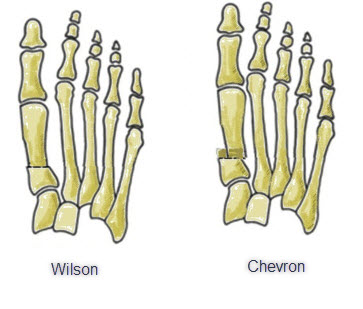
Arthroplasty
Arthroplasty for the treatment of hallux valgus, also known as joint replacement surgery for bunion, is a surgical procedure to correct the deformity of the hallux (big toe) often associated with this condition. Hallux valgus is characterized by an abnormal outward deviation of the big toe, causing a painful bump to form on the side of the foot. When conservative measures such as wearing suitable shoes and using orthotics fail to relieve symptoms, joint replacement may be considered.
During this procedure, the surgeon can adjust the angle of the metatarsal bones, remove the bony bump, and realign the big toe to restore a more normal position. In the specific case of hallux valgus arthroplasty, joint implants can also be used to replace or reinforce damaged joint surfaces. This aims to reduce pain, restore joint function and improve the aesthetics of the foot.
As with any surgical procedure, hallux valgus arthroplasty carries potential risks, including infection, joint stiffness, and a postoperative recovery period. Patients are usually evaluated carefully before surgery, and the choice of surgical approach depends on the specific characteristics of the hallux deformity.
It is essential that patients understand the benefits, risks, and expectations of hallux valgus arthroplasty, and carefully follow postoperative recommendations to optimize results and recovery. The decision-making on this intervention must involve an in-depth discussion between the patient and their orthopedic surgeon to ensure personalized care adapted to each individual case.
Here are some points to consider regarding hallux arthroplasty:
- Purpose: The primary goal of hallux arthroplasty is to correct the deviation of the big toe and reduce the pain associated with hallux valgus. This may also include correcting other structural abnormalities of the joint.
- Surgical techniques: There are different surgical techniques for hallux arthroplasty, and the choice depends on the severity of the deformity and the specific needs of the patient. Some procedures involve resection of part of the bone to realign the joint, while others may involve securing the bone with screws or plates.
- Joint replacement: In some cases, when the joint is severely damaged, a replacement arthroplasty may be considered. This often involves the use of joint implants to restore joint function.
- Recovery: The recovery period after hallux arthroplasty can vary depending on the specific procedure performed. Patients may require a period of immobilization, followed by rehabilitation to restore mobility and strength to the foot.
- Risks and Complications: As with any surgical procedure, hallux arthroplasty carries risks and potential complications, including infection, healing problems, and possible loss of mobility or sensation.
- Indications: Hallux arthroplasty is usually considered when non-surgical measures, such as wearing suitable shoes, using orthotics and other conservative interventions, fail to relieve symptoms and correct the deformation adequately.
It is important to note that each case of hallux valgus is unique, and the decision to opt for arthroplasty will depend on several factors, including the severity of the deformity, the presence of symptoms, and response to non-surgical treatments. Patients should discuss in detail with their orthopedic surgeon to understand the benefits, risks and expectations associated with hallux arthroplasty.
X-ray signs
Radiographic signs of hallux valgus, or bunion, are assessed using a foot x-ray. These images allow healthcare professionals, such as radiologists, orthopedists or podiatrists, to visualize bone structure and identify specific characteristics of the deformity. Here are some typical radiographic signs of hallux valgus:
- Intermetatarsal (IM) angle: This is the angle formed between the metatarsal bones of the big toe and the second toe. In hallux valgus, this angle is increased, indicating an inward deviation of the big toe.
- Hallux valgus angle (HAV): This angle measures the deviation of the big toe from the longitudinal axis of the foot. A larger hallux valgus angle indicates greater deviation of the big toe.
- Displacement of the metatarsal head: X-rays can show if the metatarsal head (the bony end of the big toe) is displaced inward relative to the base of the metatarsal.
- Joint enlargement: X-rays may reveal enlargement of the metatarsophalangeal (MTP) joint, the joint at the base of the big toe, often associated with the formation of a bump.
- Osteophytes: Bony growths called osteophytes can form at the base of the big toe in response to friction and irritation, which can also be seen on x-rays.
Radiographic evaluation allows healthcare professionals to determine the severity of the deformity, develop an appropriate treatment plan, and monitor disease progression over time. Radiographs are often taken with the patient standing to replicate normal loading forces on the foot, which can influence big toe deviation.

Conclusion
In conclusion, hallux valgus, or “bunion,” represents a common and sometimes painful podiatric condition that can affect the quality of life of individuals. Its genetic origins, coupled with environmental factors such as wearing inappropriate shoes, highlight the importance of prevention.
Although non-surgical approaches, such as choosing the right shoes and using orthotics, can alleviate symptoms, surgery often becomes necessary when the deformity becomes disabling. Advances in surgical procedures offer promising options for correcting big toe deviation and restoring normal foot function.
Raising awareness of hallux valgus, as well as adopting preventative practices, is crucial to minimizing the impact of this condition. Regular follow-up with a healthcare professional, informed shoe choices, and specific exercises can help prevent or alleviate the development of this painful deformity.
By understanding the causes, symptoms, and treatment options for hallux valgus, everyone can take proactive steps to maintain their foot health and promote a better long-term quality of life.
References
- Blitz NM, Lee T, Williams K, Barkan H, DiDimenico LA. Early weight bearing after modified lapidus arthodesis: a multicenter review of 80 cases. J Foot Ankle Surg. 2010 Jul-Aug;49(4):357-62. [PubMed]
- Coughlin MJ, Jones CP. Halluxvalgus: demographics, etiology, and radiographic assessment. Foot Ankle Int. 2007 Jul;28(7):759-77. [PubMed]
- Nix S, Smith M, Vicenzino B. Prevalence of hallux valgus in the general population: a systematic review and meta-analysis. J Foot Ankle Res. 2010 Sep 27;3:21. [PMC free article] [PubMed]
- Glasoe WM, Nuckley DJ, Ludewig PM. Hallux valgus and the first metatarsal arch segment: a theoretical biomechanical perspective. Phys Ther. 2010 Jan;90(1):110-20. [PubMed]
- Wülker N, Mittag F. The treatment of hallux valgus. Dtsch Arztebl Int. 2012 Dec;109(49):857-67; quiz 868. [PMC free article] [PubMed]6.Giannini S, Faldini C, Nanni M, Di Martino A, Luciani D, Vannini F. A minimally invasive technique for surgical treatment of hallux valgus: simple, effective, rapid, inexpensive (SERI). Int Orthop. 2013 Sep;37(9):1805-13. [PMC free article] [PubMed
- .Gilheany MF, Landorf KB, Robinson P. Halluxvalgus and hallux rigidus: a comparison of impact on health-related quality of life in patients presenting to foot surgeons in Australia. J Foot Ankle Res. 2008 Dec 11;1(1):14. [PMC free article] [PubMed]
- Krannitz KW, Fong HW, Fallat LM, Kish J. The effect of cigarette smoking on radiographic bone healing after elective foot surgery. J Foot Ankle Surg. 2009 Sep-Oct;48(5):525-7. [PubMed]
- Dux K, Smith N, Rottier FJ. Outcome after metatarsal osteotomy for hallux valgus: a study of postoperative foot function using revised foot function index short form. J Foot Ankle Surg. 2013 Jul-Aug;52(4):422-5. [PubMed]



